Chinese crowdfunding, or hidden dragon
Crowdfunding in China is booming, if not booming. No wonder: the authorities of the country are stimulating innovative business, so crowdfunding platforms have proliferated like mushrooms after rain. At one time, their number numbered more than 200 pieces, the most significant ones were discovered by large online retailers JD, Alibaba and Suning.
Despite the difficulties associated with local law, the crowdfunding model is flourishing. What do Chinese entrepreneurs create with the power of the Internet? We present a selection of nine successful October projects crowdfunding platform of the company JD.
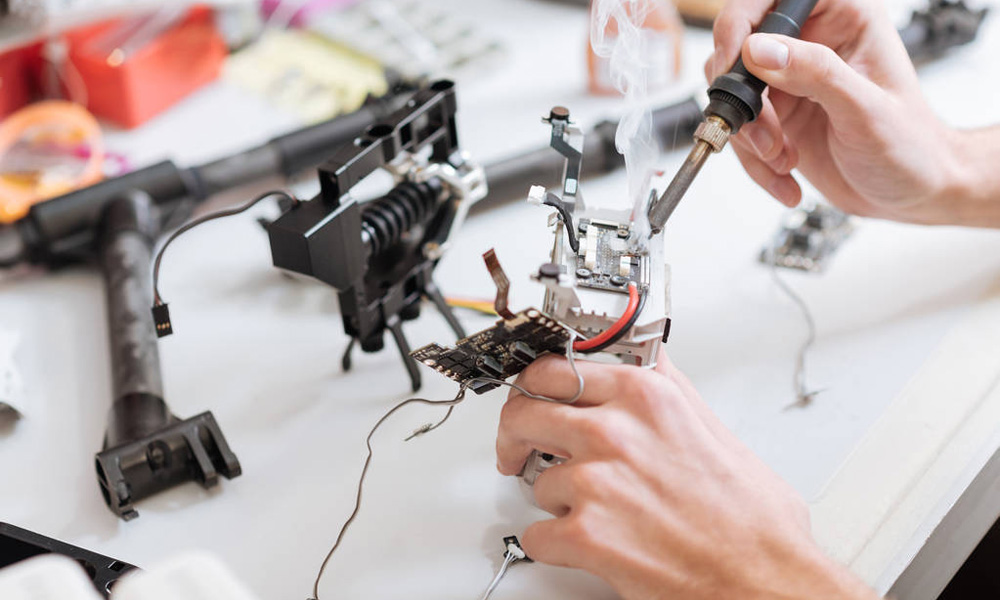
')

The “butterfly”, which will surely turn an office dreamer into an inflated viking, appears on JD regularly. Externally, the J-Wild miostimulator is indistinguishable from competing products, but its creators claim that it is this gadget that will allow you to lose excess fat and acquire carved muscles, doing almost nothing - in just 4 weeks.

The J-Wild kit consists of two separate silicone “butterflies”: one specifically for the abdominal muscles, the other attached to any other place. Their sizes are 200 x 170 millimeters and 230 x 120 millimeters, weight is 50 and 30 grams, respectively. They are equipped with a 180 mAh battery, and are charged via the USB port. The device delivers a current of 35 hertz.
Before using myostimulator, it should be lubricated with a special gel that comes in the kit. Then the sports gadget is connected via Bluetooth to an iOS or Android smartphone with a pre-installed proprietary application. The application controls the rhythm of stimulation, for which there are many different modes. J-Wild shocks for a reason, and for acupuncture points, which other “butterflies” do not.
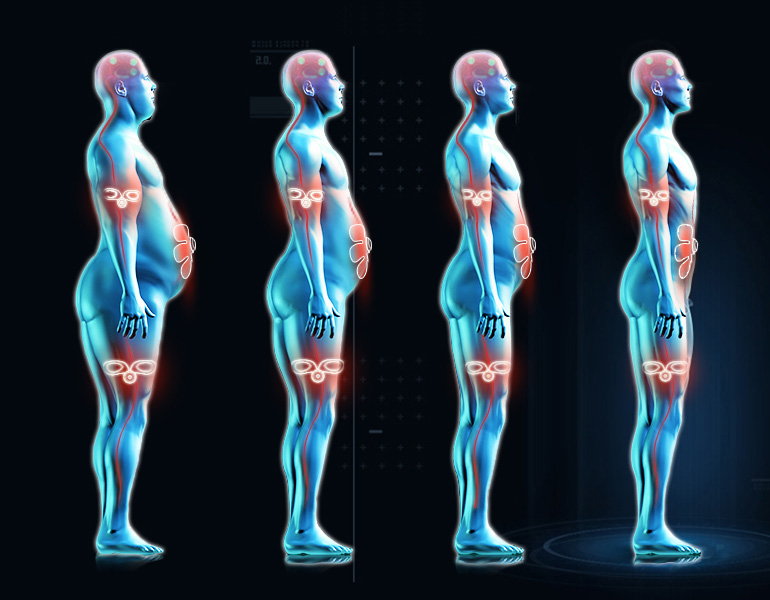
2572 backers considered the arguments of developers from Guangdong convincing and supported the project. The J-Wild Miostimulator collected more than 1,681,943 yuan ($ 253,392) with a target amount of 100,000 ($ 15,000). The cost of the device itself started from 96 yuan ($ 14.5). The campaign ended on October 31, deliveries began as early as November.

Over the past couple of years, automotive navigation displays have managed to migrate from science fiction to a tangible reality. Even Russian inventors managed to develop two of their device versions - Hudway Glass and Hudway Cast, so the Chinese needed only to refine the idea. So on JD appeared YYunDrive P1S, a useful accessory for the driver.
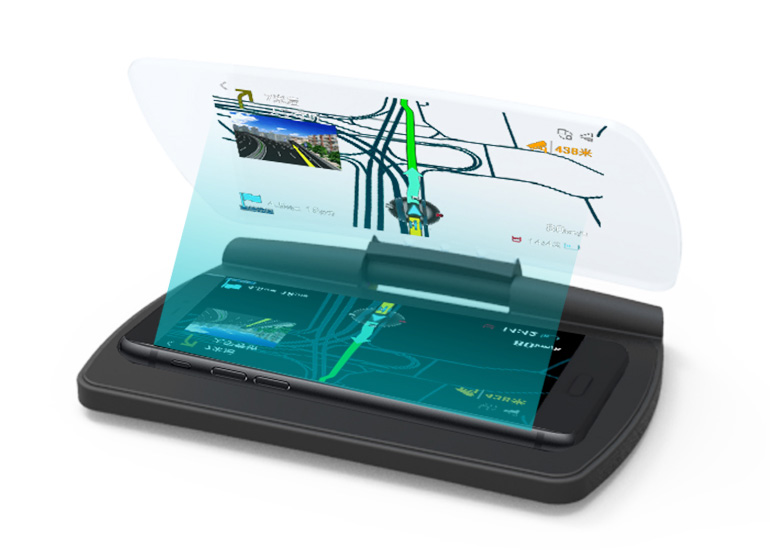
The gadget consists of three parts: the display itself with a reflective surface, the control panel and the bracket, which is mounted behind the visor. It requires a smartphone, which is either mounted on a velcro under the display, or mounted on a mount and sent to its transparent screen with a mirror. The image from the smartphone is reflected and inverted in the mirror, the result is a small interface right in front of the driver's eyes. It is controlled by voice and three buttons on the remote, which, in turn, clings to the steering wheel.

Mobile application for P1S works with smartphones based on Android 4.4 or iOS 8.4 and older, the connection is via Bluetooth. The gadget shows a map, allows you to switch music, answer in WeChat and make calls without removing your hands from the steering wheel and not taking your eyes off the road.
P1S is already at least the second version of the YYunDrive automotive interface. The gadget collected without problems 1,020,335 yuan ($ 154,000) with a minimum threshold of 100,000 yuan ($ 15,000). Orders for the device placed 3367 people, the fees ended on October 21. One set of P1S cost from 199 yuan ($ 30), the first deliveries are scheduled for the end of November.
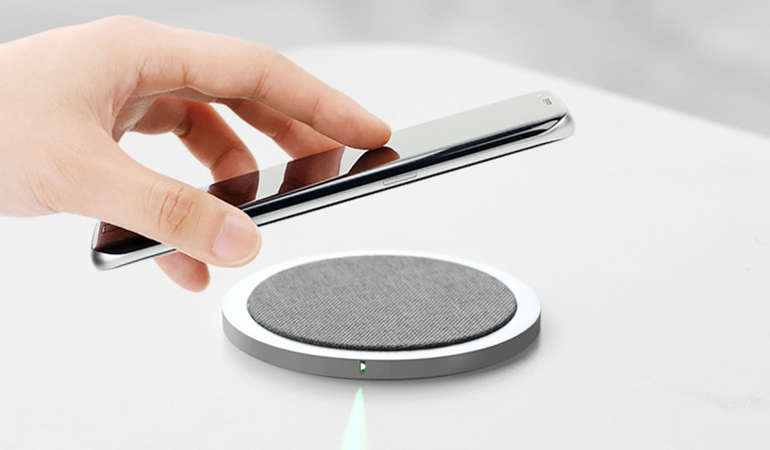
While Western startups crumple and sway, the Chinese react with lightning speed. In September, Apple introduced two new models of its smartphone, the iPhone 8 and iPhone X, which support wireless charging. A month later, JD already has a wireless charging dock that works with new gadgets.
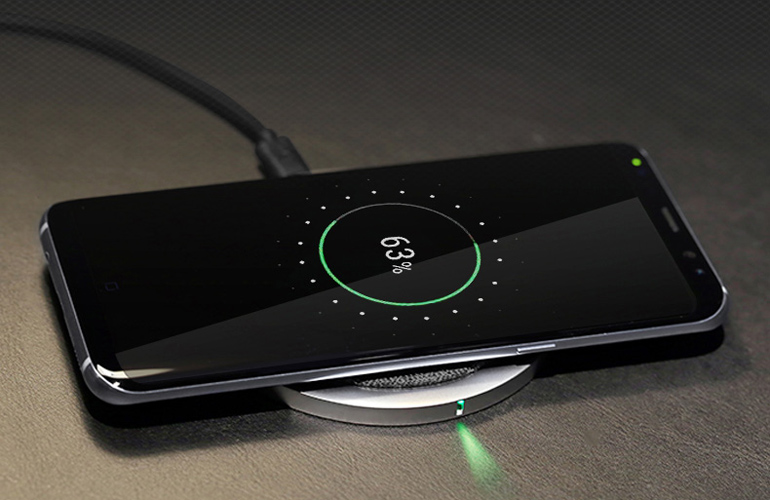
The device is called "Aurora" (Jíguāng) and is a round stand. From above, it is covered with a pleasant to the touch linen fabric, so as not to scratch the glass cover of the smartphone. The case itself is metallic, its thickness is 5.8 millimeters.
Charging conforms to Qi standard. Its characteristics are standard - 5 volts / 2 amperes at the input, 5 volts / 1 amperes at the output. In addition, fast charging is supported. The list of compatible devices includes almost all popular smartphone models, but it is separately indicated that for some it will be necessary to purchase a film receiver (or a cover).
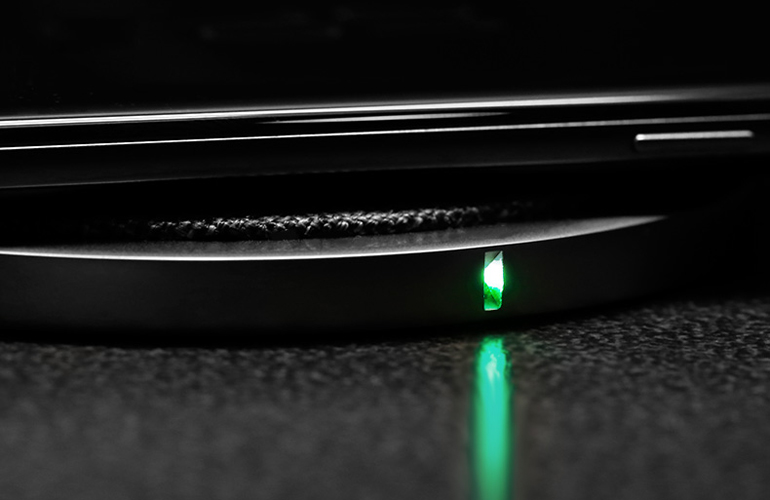
The gadget received 255,759 yuan ($ 38,500) with the same 100,000 yuan ($ 15,000) needed, the number of backers exceeded 3,300 people. Charges ended on November 11, and deliveries will begin in December. The cost of one Aurora when ordering for JD was 98 yuan ($ 15).

The neck massager is another “oriental” gadget that you can hardly find on Kickstarter or Indiegogo. And in vain: a useful physiotherapeutic device helps to get rid of the pain caused by incorrect posture and age-related changes.
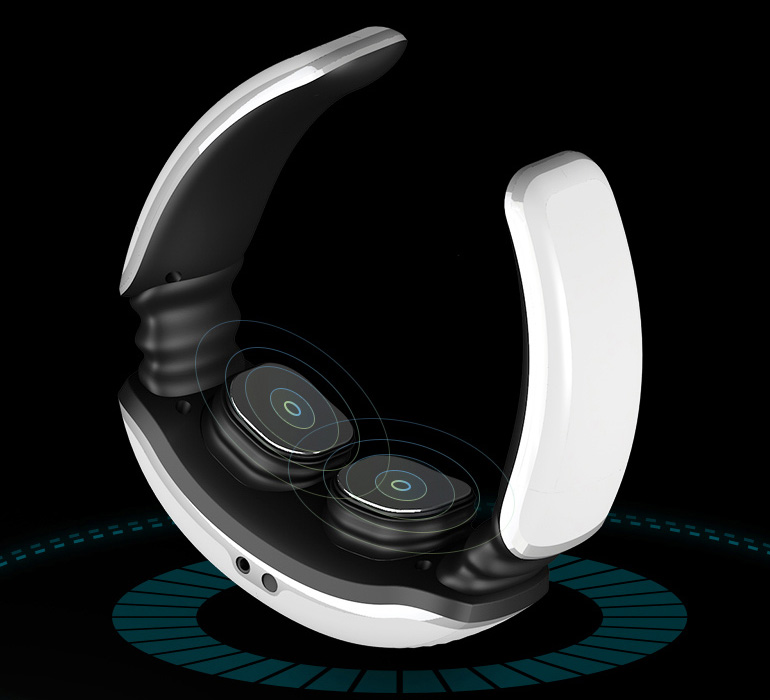
Developed by Osto, the eponymous massager is a typical representative of this class of devices. "Necklace" is put on the neck, and begins to simultaneously affect the sore spot weak electrical impulses, magnetic field and heat. Heating is carried out to 65 degrees Celsius. The gadget is wireless, the duration of its batteries depends on the intensity of the massage and frequency of use. On average, if you turn on the device twice a day for 15 minutes, then the charge is just enough for 5 days. The developers honestly do not recommend charging such a thing around your neck.
Overall, Osto seems to be a rather conservative version of the neck massager. The presence of the application and the “apple” design distinguishes it from the fellow In addition, electrodes are supplied to the massager on wires to stimulate the rest of the body.
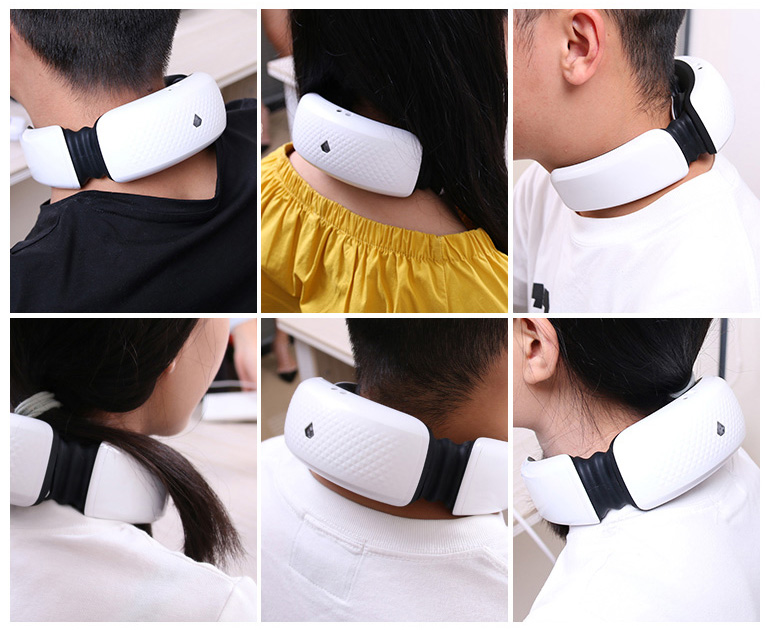
Despite its ordinary nature, the gadget conducted an unusually successful campaign and drew 2,050,091 yuan ($ 309,000) from the requested 100,000 yuan ($ 15,000). The number of backers has exceeded 6,300 people. Charges ended on October 31, and deliveries started in 7 days. The cost of the massager - from 268 yuan ($ 40).
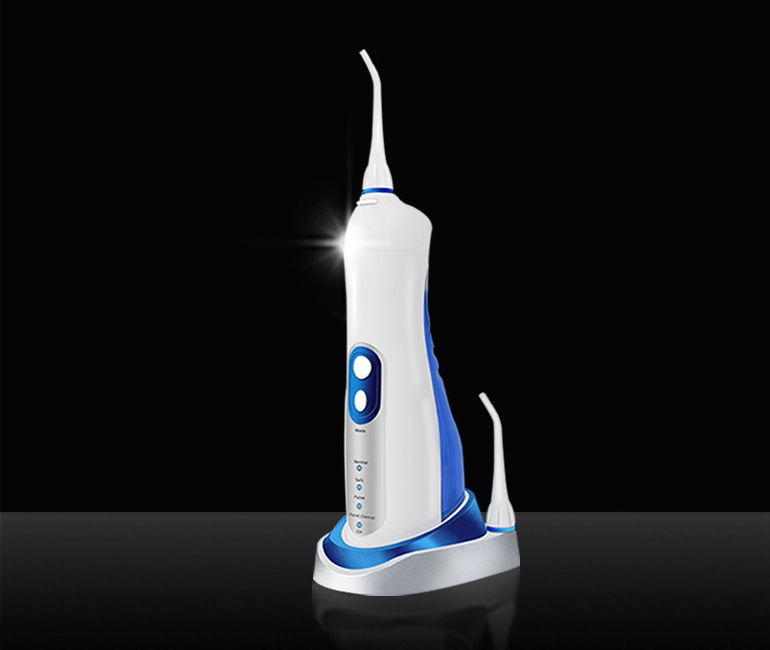
In July, Kickstarter "blew up" a new gadget - a smart toothbrush with a cap of Amabrush, which brushes teeth in 30 seconds. In fact, despite the attractiveness of the concept, this is already a dental stone age. The smartest gadget for cleaning teeth is definitely an irrigator, which removes plaque and contamination with a water jet. Not autonomously, but very effective.

This is the device that DC Clean launched on JD crowdfunding. It is distinguished by an increased pulse rate of 1600 pulses per minute (with a standard value of 1400 pulses) with a jet pressure of 275–620 kPa. Thanks to this, the gadget cleans the oral cavity in 30 seconds. However, since it is portable, the volume of the reservoir for the liquid is small, only 170 milliliters. The battery capacity is 1700 mAh.
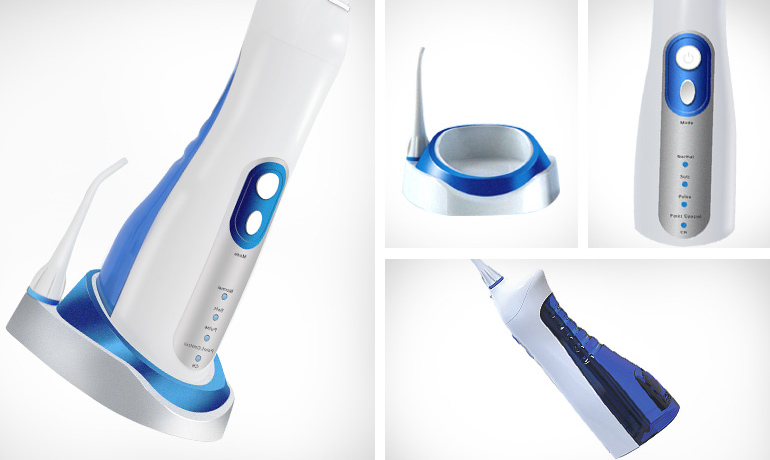
The irrigator campaign attracted 862,201 yuan ($ 130,000), more than eight times the target amount of 100,000 yuan ($ 15,000). Charges ended October 31, 3300 backers began to receive their gadget a week later. What is interesting in this case is the low cost: 298 yuan ($ 45) for one set, which includes the gadget itself, 8 interchangeable tips and two bottles of mouthwash.

The Chinese startup Codoon at one time successfully copied fitness trackers from Nike and Jawbone. Now Jawbone has gone bankrupt and has ceased to engage in wearable sports gadgets, and Codoon continues to deal with the same topic. His latest successful project is smart sneakers.

From the standard sneakers, millions of stamped in China, the development of Codoon is distinguished by a fitness tracker. It is inserted into the recess in the sole and then tracks the distance, the number of steps and calories burned. The tracker also includes a more advanced and interesting functionality - “personal trainer”. You will need a smartphone for his work in order for the system to give valuable instructions and direct the training in real time. The gadget runs on batteries, which will last for 6 months of use. Its moisture protection degree is IPX6.
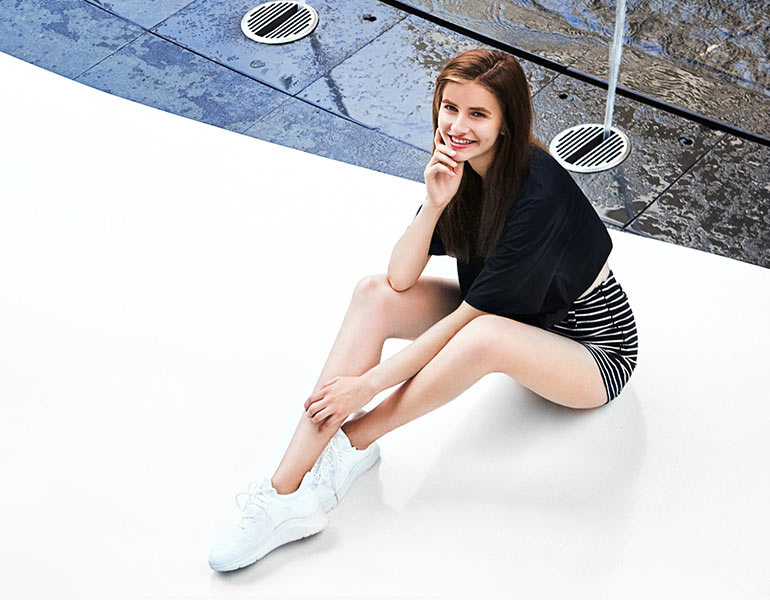
This is not the first version of smart shoes designed by Codoon. But the backers obviously liked them, since 8284 people collected 2,987,822 yuan ($ 450,000) at a threshold of 500,000 yuan ($ 75,000). The campaign ended on October 13, so supplies have already started. The cost of one pair ranged from 179 yuan ($ 27).

Fabric masks managed to become a real hit of the Asian beauty industry. In fact, these are impregnated wipes that are molded onto the face for a few minutes. As you can imagine, the procedure is not the most pleasant. But fans of masks are convinced of their miraculousness: they relieve wrinkles and moisturize the skin, and give the face a fresh look.
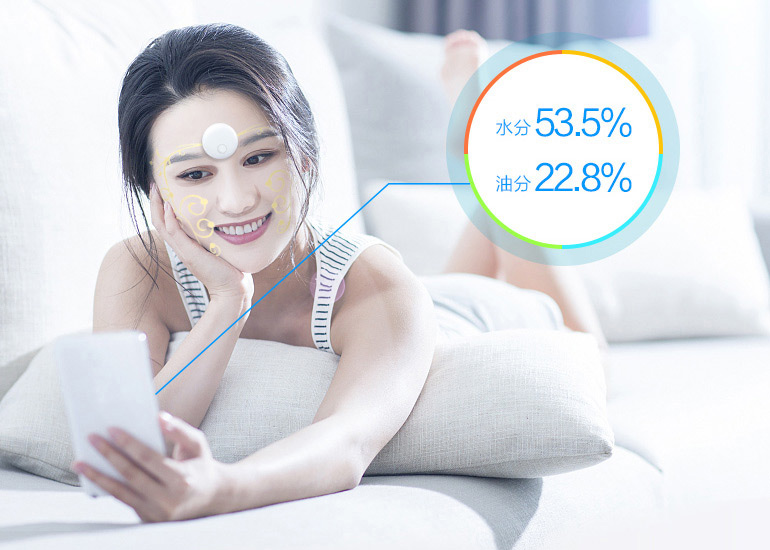
Chinese innovators have come up with smart fabric masks. They connect to a small gadget that connects to a smartphone via Bluetooth and then activates the components inside the fabric in some way or other to increase their absorption into the skin.
In the case of the Osto option, the activator is bioelectricity. In the mask itself is a conductive contour of silver, as well as it is impregnated with nutrient components of plant origin. The gadget is attached to the forehead and begins to send a weak current to the mask, which should stimulate the regeneration of skin cells, facial cleansing, narrowing of pores and deeper penetration of moisture. One session lasts 12 minutes.
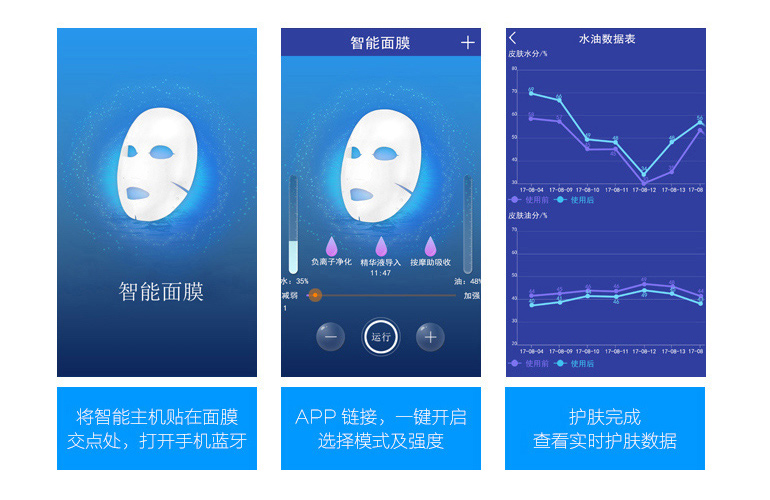
The gadget is equipped with a battery and is charging, but it’s not quite clear how many uses will be enough for one battery of its batteries. The masks are uniquely disposable, they can be re-applied to the skin on the arm or leg, but not to the face.
Despite the doubtfulness of the idea, the bioelectric fabric mask collected 858,712 yuan ($ 130,000) from the required 100,000 yuan ($ 15,000). The campaign came to an end on October 22, deliveries started a week later. The number of project backers has exceeded 3200 people, and the cost of one set started at 268 yuan ($ 40).
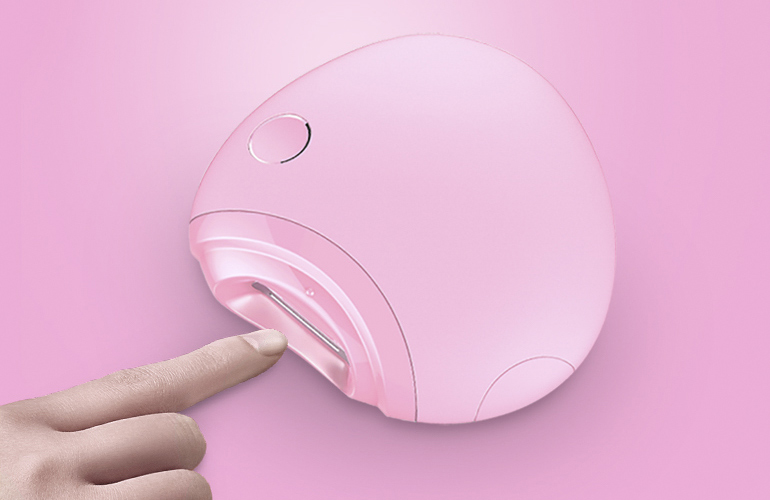
Apparently, for a significant part of JD.com visitors, a beautiful manicure is a matter of life and death. Otherwise, it is difficult to explain why the iMoll simple electric gadget attracted so much attention and money.
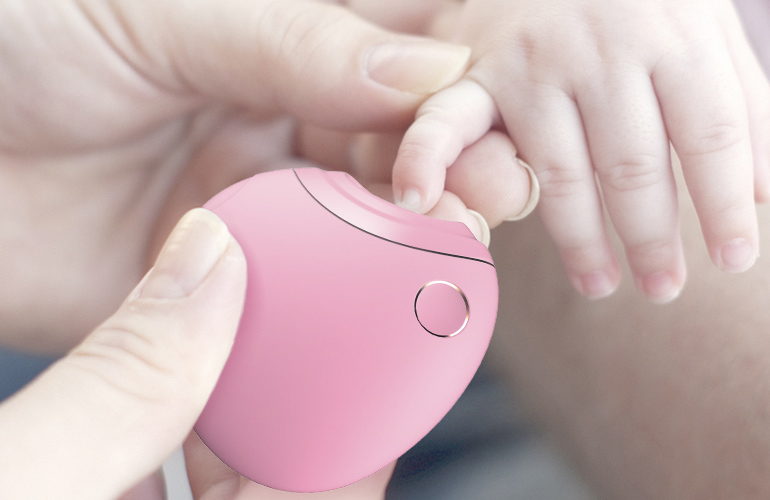
iMoll is an electric scissors for cutting nails on the hands and on the legs (but it is better not to combine the first with the second of hygienic considerations). The gadget is a small rounded device with a longitudinal hole, which is inserted into the nail. A small milling cutter rotates inside, which cuts off pieces of the nail. There are no applications (the Chinese clearly did not have enough imagination for such a feat), the claw cutter is activated at the touch of a button. Scraps fall into a removable lid, from where they are easy to throw away, not scattering throughout the house. The device's battery lasts for 8 hours of continuous operation, and it is charged via USB cable.
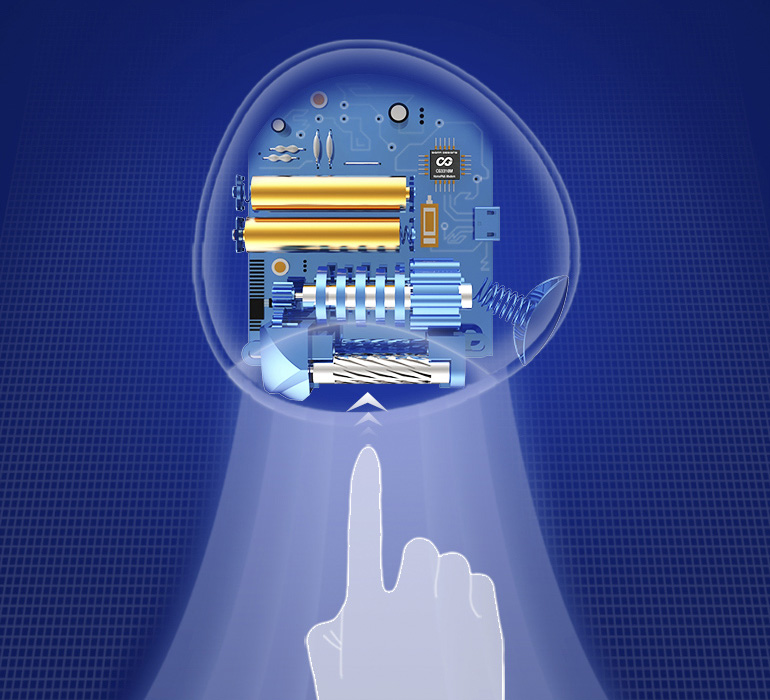
The process of automatic nail cutting is not silent. According to the creators of iMoll, the noise level is at 40-50 dB, not louder than a normal conversation. Since the cutter is covered, the gadget can safely cut the nails on the fingers of a small child.
At the end of the campaign on October 8, 12,169 backers gave the iMoll project 1,006,045 yuan ($ 151,500) with the required amount of 100,000 yuan ($ 15,000). Deliveries should begin during December. One gadget cost 69 yuan ($ 10), 12,157 people ordered it.
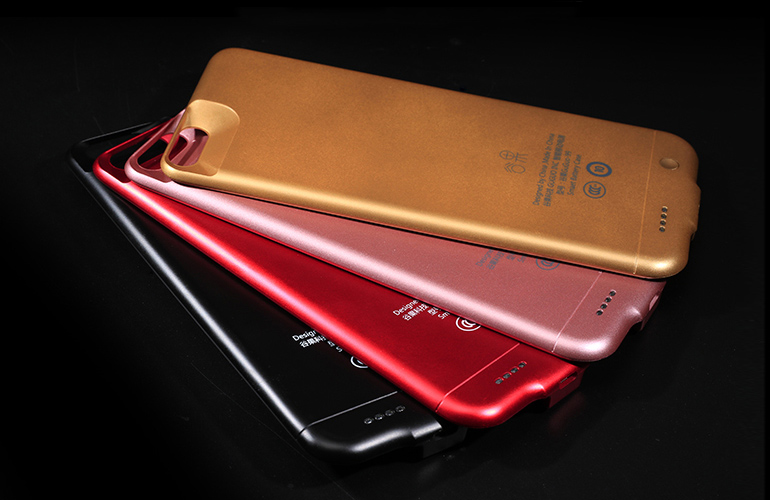
With what, and with a charging Chinese case it is difficult to surprise someone, even if it is for the legendary Apple smartphone. They produce the sea: the only thing that really surprises is the perseverance with which the Cupertino company itself offers its fans the same humpback case.

Therefore, enterprising dealers from Shenzhen founded a company with a long and unpronounceable name (Shenzhen Yi Wizard Technology Co., Ltd), and launched on JD another life-saving accessory for the dying batteries of all iPhones of the sixth and seventh generations.
This is a case of a urethane thermoplastic elastomer, polycarbonate and ABS plastic, with a lithium-iron-phosphate battery with a capacity of 3300–3600 mAh. It charges via USB and then charges the smartphone. He can do it at the same time, as it supports two-way fast charging.
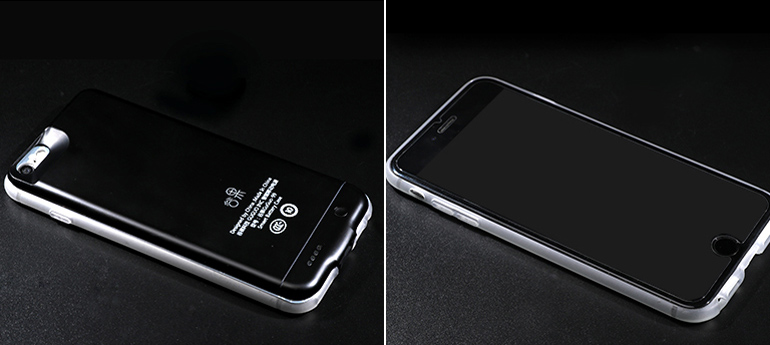
The campaign ended on October 26, with a total of 199,226 yuan ($ 30,000) instead of the required 100,000 yuan ($ 15,000). The project was supported by 1,475 backers who have already begun to receive their accessories. The cost of one piece ranged from 11 yuan ($ 2).
What do you think about Chinese crowdfunding projects? Which one would you support, and why? Share your opinion in the comments.
Despite the difficulties associated with local law, the crowdfunding model is flourishing. What do Chinese entrepreneurs create with the power of the Internet? We present a selection of nine successful October projects crowdfunding platform of the company JD.

')
Smart Miostimulator J-Wild

The “butterfly”, which will surely turn an office dreamer into an inflated viking, appears on JD regularly. Externally, the J-Wild miostimulator is indistinguishable from competing products, but its creators claim that it is this gadget that will allow you to lose excess fat and acquire carved muscles, doing almost nothing - in just 4 weeks.

The J-Wild kit consists of two separate silicone “butterflies”: one specifically for the abdominal muscles, the other attached to any other place. Their sizes are 200 x 170 millimeters and 230 x 120 millimeters, weight is 50 and 30 grams, respectively. They are equipped with a 180 mAh battery, and are charged via the USB port. The device delivers a current of 35 hertz.
Before using myostimulator, it should be lubricated with a special gel that comes in the kit. Then the sports gadget is connected via Bluetooth to an iOS or Android smartphone with a pre-installed proprietary application. The application controls the rhythm of stimulation, for which there are many different modes. J-Wild shocks for a reason, and for acupuncture points, which other “butterflies” do not.

2572 backers considered the arguments of developers from Guangdong convincing and supported the project. The J-Wild Miostimulator collected more than 1,681,943 yuan ($ 253,392) with a target amount of 100,000 ($ 15,000). The cost of the device itself started from 96 yuan ($ 14.5). The campaign ended on October 31, deliveries began as early as November.
AR-display YYunDrive HUD P1S

Over the past couple of years, automotive navigation displays have managed to migrate from science fiction to a tangible reality. Even Russian inventors managed to develop two of their device versions - Hudway Glass and Hudway Cast, so the Chinese needed only to refine the idea. So on JD appeared YYunDrive P1S, a useful accessory for the driver.

The gadget consists of three parts: the display itself with a reflective surface, the control panel and the bracket, which is mounted behind the visor. It requires a smartphone, which is either mounted on a velcro under the display, or mounted on a mount and sent to its transparent screen with a mirror. The image from the smartphone is reflected and inverted in the mirror, the result is a small interface right in front of the driver's eyes. It is controlled by voice and three buttons on the remote, which, in turn, clings to the steering wheel.

Mobile application for P1S works with smartphones based on Android 4.4 or iOS 8.4 and older, the connection is via Bluetooth. The gadget shows a map, allows you to switch music, answer in WeChat and make calls without removing your hands from the steering wheel and not taking your eyes off the road.
P1S is already at least the second version of the YYunDrive automotive interface. The gadget collected without problems 1,020,335 yuan ($ 154,000) with a minimum threshold of 100,000 yuan ($ 15,000). Orders for the device placed 3367 people, the fees ended on October 21. One set of P1S cost from 199 yuan ($ 30), the first deliveries are scheduled for the end of November.
Wireless charging Funxim Jiguang

While Western startups crumple and sway, the Chinese react with lightning speed. In September, Apple introduced two new models of its smartphone, the iPhone 8 and iPhone X, which support wireless charging. A month later, JD already has a wireless charging dock that works with new gadgets.

The device is called "Aurora" (Jíguāng) and is a round stand. From above, it is covered with a pleasant to the touch linen fabric, so as not to scratch the glass cover of the smartphone. The case itself is metallic, its thickness is 5.8 millimeters.
Charging conforms to Qi standard. Its characteristics are standard - 5 volts / 2 amperes at the input, 5 volts / 1 amperes at the output. In addition, fast charging is supported. The list of compatible devices includes almost all popular smartphone models, but it is separately indicated that for some it will be necessary to purchase a film receiver (or a cover).

The gadget received 255,759 yuan ($ 38,500) with the same 100,000 yuan ($ 15,000) needed, the number of backers exceeded 3,300 people. Charges ended on November 11, and deliveries will begin in December. The cost of one Aurora when ordering for JD was 98 yuan ($ 15).
Massager OSTO

The neck massager is another “oriental” gadget that you can hardly find on Kickstarter or Indiegogo. And in vain: a useful physiotherapeutic device helps to get rid of the pain caused by incorrect posture and age-related changes.

Developed by Osto, the eponymous massager is a typical representative of this class of devices. "Necklace" is put on the neck, and begins to simultaneously affect the sore spot weak electrical impulses, magnetic field and heat. Heating is carried out to 65 degrees Celsius. The gadget is wireless, the duration of its batteries depends on the intensity of the massage and frequency of use. On average, if you turn on the device twice a day for 15 minutes, then the charge is just enough for 5 days. The developers honestly do not recommend charging such a thing around your neck.
Overall, Osto seems to be a rather conservative version of the neck massager. The presence of the application and the “apple” design distinguishes it from the fellow In addition, electrodes are supplied to the massager on wires to stimulate the rest of the body.

Despite its ordinary nature, the gadget conducted an unusually successful campaign and drew 2,050,091 yuan ($ 309,000) from the requested 100,000 yuan ($ 15,000). The number of backers has exceeded 6,300 people. Charges ended on October 31, and deliveries started in 7 days. The cost of the massager - from 268 yuan ($ 40).
DC Cleaner

In July, Kickstarter "blew up" a new gadget - a smart toothbrush with a cap of Amabrush, which brushes teeth in 30 seconds. In fact, despite the attractiveness of the concept, this is already a dental stone age. The smartest gadget for cleaning teeth is definitely an irrigator, which removes plaque and contamination with a water jet. Not autonomously, but very effective.

This is the device that DC Clean launched on JD crowdfunding. It is distinguished by an increased pulse rate of 1600 pulses per minute (with a standard value of 1400 pulses) with a jet pressure of 275–620 kPa. Thanks to this, the gadget cleans the oral cavity in 30 seconds. However, since it is portable, the volume of the reservoir for the liquid is small, only 170 milliliters. The battery capacity is 1700 mAh.

The irrigator campaign attracted 862,201 yuan ($ 130,000), more than eight times the target amount of 100,000 yuan ($ 15,000). Charges ended October 31, 3300 backers began to receive their gadget a week later. What is interesting in this case is the low cost: 298 yuan ($ 45) for one set, which includes the gadget itself, 8 interchangeable tips and two bottles of mouthwash.
Codoon Clever Sneakers

The Chinese startup Codoon at one time successfully copied fitness trackers from Nike and Jawbone. Now Jawbone has gone bankrupt and has ceased to engage in wearable sports gadgets, and Codoon continues to deal with the same topic. His latest successful project is smart sneakers.

From the standard sneakers, millions of stamped in China, the development of Codoon is distinguished by a fitness tracker. It is inserted into the recess in the sole and then tracks the distance, the number of steps and calories burned. The tracker also includes a more advanced and interesting functionality - “personal trainer”. You will need a smartphone for his work in order for the system to give valuable instructions and direct the training in real time. The gadget runs on batteries, which will last for 6 months of use. Its moisture protection degree is IPX6.

This is not the first version of smart shoes designed by Codoon. But the backers obviously liked them, since 8284 people collected 2,987,822 yuan ($ 450,000) at a threshold of 500,000 yuan ($ 75,000). The campaign ended on October 13, so supplies have already started. The cost of one pair ranged from 179 yuan ($ 27).
Smart Mask Smart Mask

Fabric masks managed to become a real hit of the Asian beauty industry. In fact, these are impregnated wipes that are molded onto the face for a few minutes. As you can imagine, the procedure is not the most pleasant. But fans of masks are convinced of their miraculousness: they relieve wrinkles and moisturize the skin, and give the face a fresh look.

Chinese innovators have come up with smart fabric masks. They connect to a small gadget that connects to a smartphone via Bluetooth and then activates the components inside the fabric in some way or other to increase their absorption into the skin.
In the case of the Osto option, the activator is bioelectricity. In the mask itself is a conductive contour of silver, as well as it is impregnated with nutrient components of plant origin. The gadget is attached to the forehead and begins to send a weak current to the mask, which should stimulate the regeneration of skin cells, facial cleansing, narrowing of pores and deeper penetration of moisture. One session lasts 12 minutes.

The gadget is equipped with a battery and is charging, but it’s not quite clear how many uses will be enough for one battery of its batteries. The masks are uniquely disposable, they can be re-applied to the skin on the arm or leg, but not to the face.
Despite the doubtfulness of the idea, the bioelectric fabric mask collected 858,712 yuan ($ 130,000) from the required 100,000 yuan ($ 15,000). The campaign came to an end on October 22, deliveries started a week later. The number of project backers has exceeded 3200 people, and the cost of one set started at 268 yuan ($ 40).
IMoll electric nail scissors

Apparently, for a significant part of JD.com visitors, a beautiful manicure is a matter of life and death. Otherwise, it is difficult to explain why the iMoll simple electric gadget attracted so much attention and money.

iMoll is an electric scissors for cutting nails on the hands and on the legs (but it is better not to combine the first with the second of hygienic considerations). The gadget is a small rounded device with a longitudinal hole, which is inserted into the nail. A small milling cutter rotates inside, which cuts off pieces of the nail. There are no applications (the Chinese clearly did not have enough imagination for such a feat), the claw cutter is activated at the touch of a button. Scraps fall into a removable lid, from where they are easy to throw away, not scattering throughout the house. The device's battery lasts for 8 hours of continuous operation, and it is charged via USB cable.

The process of automatic nail cutting is not silent. According to the creators of iMoll, the noise level is at 40-50 dB, not louder than a normal conversation. Since the cutter is covered, the gadget can safely cut the nails on the fingers of a small child.
At the end of the campaign on October 8, 12,169 backers gave the iMoll project 1,006,045 yuan ($ 151,500) with the required amount of 100,000 yuan ($ 15,000). Deliveries should begin during December. One gadget cost 69 yuan ($ 10), 12,157 people ordered it.
Battery Case for Gu Guo Smartphone

With what, and with a charging Chinese case it is difficult to surprise someone, even if it is for the legendary Apple smartphone. They produce the sea: the only thing that really surprises is the perseverance with which the Cupertino company itself offers its fans the same humpback case.

Therefore, enterprising dealers from Shenzhen founded a company with a long and unpronounceable name (Shenzhen Yi Wizard Technology Co., Ltd), and launched on JD another life-saving accessory for the dying batteries of all iPhones of the sixth and seventh generations.
This is a case of a urethane thermoplastic elastomer, polycarbonate and ABS plastic, with a lithium-iron-phosphate battery with a capacity of 3300–3600 mAh. It charges via USB and then charges the smartphone. He can do it at the same time, as it supports two-way fast charging.

The campaign ended on October 26, with a total of 199,226 yuan ($ 30,000) instead of the required 100,000 yuan ($ 15,000). The project was supported by 1,475 backers who have already begun to receive their accessories. The cost of one piece ranged from 11 yuan ($ 2).
What do you think about Chinese crowdfunding projects? Which one would you support, and why? Share your opinion in the comments.
Source: https://habr.com/ru/post/371001/
All Articles